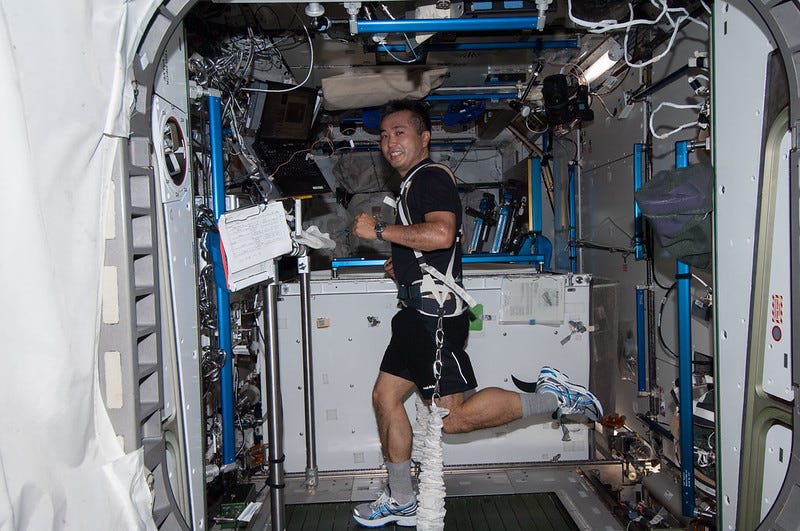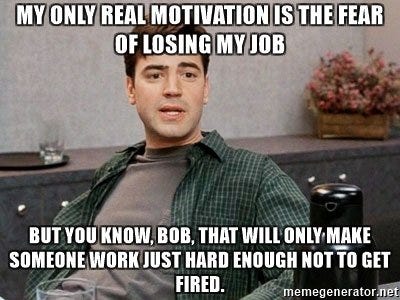Bones aren’t static – they continuously reshape themselves in response to the forces we apply, whether we realize it or not. This invisible process, known as Wolff’s law, explains why astronauts lose bone density in space and why our professional and emotional resilience is quietly shaped by small, everyday interactions that we often overlook.
One goal of this newsletter is to offer career insights informed by physiology, biomechanics, and subtle daily behaviors. Often, profound advice emerges from understanding how nature shapes us quietly, invisibly, yet continuously. To better understand these invisible influences, let’s delve deeper into Wolff’s law and its striking parallels to our professional lives.
Wolff’s Law Primer
Wolff’s law, formulated by German anatomist Julius Wolff in the late 19th century, states that bone tissue remodels in response to mechanical stress – bones strengthen when regularly loaded and weaken when such loading stops. Microscopically, areas receiving regular stress increase in density, while regions without such loading gradually weaken. For clinicians and patients alike, Wolff’s law underscores a critical insight: consistent loading is essential not only for skeletal health but for overall musculoskeletal resilience and function.
Consider astronauts aboard the International Space Station, floating in microgravity where their bones experience minimal mechanical loading. In this environment, Wolff’s law takes a predictable yet dramatic effect – bones begin to lose density, rapidly adapting to the absence of gravitational forces. To counteract this, astronauts engage in carefully designed exercise routines using specialized resistance machines. These workouts intentionally reintroduce mechanical stress, prompting the bones to maintain their strength and density. Just as muscles and bones require consistent forces to stay robust, our personal and professional growth similarly depends on regular, intentional challenges – without them, we risk atrophy of our most valuable skills and insights.
Photo Courtesy of NASA Johnson. https://www.flickr.com/photos/nasa2explore/
Bridging Physiology and Social Science
Just as bones strengthen or weaken based on repeated stress, our careers evolve through seemingly small social interactions – a phenomenon widely studied in social sciences. Sociologist Mark Granovetter famously described how "weak ties" (relatively casual connections) significantly shape our access to opportunities, knowledge, and social networks. Social scientists have also recognized "consequential strangers," individuals outside of our closest circle who consistently support us through modest interactions.
These relationships, neither intimately close nor entirely superficial, quietly influence our well-being, resilience, and success. Regular, modest exchanges among colleagues strongly contribute to group effectiveness and individual performance, fostering trust and cooperation over time.
These social science insights strikingly parallel Wolff’s law: just as bones quietly adapt to daily mechanical loading, our professional and emotional selves continuously respond to daily social interactions. Recognizing these invisible impacts helps us consciously nurture relationships, appreciating that each minor interaction profoundly shapes our professional environment and personal resilience.
Invisible Impacts in My Own Career
My PhD took place in an extraordinarily toxic environment. External metrics indicated success: published papers, work with famous athletes, and secured grants. Yet inside the laboratory walls, negativity accumulated silently but relentlessly. Bullying, narcissism, misogyny, and secrecy didn’t always appear as dramatic events –though there were some – but rather as an unrelenting stream of dismissive remarks, curt emails, and the quiet devaluation of each person as mere cheap labor. Each seemed trivial alone, but collectively they eroded my confidence and motivation. In that negative environment, this Office Space quote perfectly reflected how I felt:
Just as astronauts must proactively exercise to counteract microgravity’s harmful effects, I needed my own consistent source of positivity. For me, this was running. No matter how exhausted I was after leaving the lab, I prioritized running every day. My training became necessary doses of positivity, counteracting the invisible yet constant negativity I endured. During that difficult period, I ran personal bests in both the 5K and 10K – not merely athletic achievements, but essential emotional victories that sustained my resilience. Physiologically speaking, recognizing a catabolic environment (one tearing us down), demands a proactive anabolic response (to build us up).
After graduating, my career took me to a radically different environment. The shift I felt was immediate – not because of a single, transformative moment, but because every interaction carried subtle positivity. Colleagues valued me for my expertise, respected my autonomy, and genuinely cared about my growth – not just because my success helped them, but because we all believed in cultivating each other’s potential. The quiet accumulation of respectful exchanges, thoughtful feedback, and daily kindness steadily helped us achieve our professional goals together.
Workplace, clinical, and educational environments quietly shape our confidence, motivation, and identity. Even minor daily exchanges – positive or negative – leave lasting marks on us and those around us.
Seeing Life Through Wolff’s Lens
When we talk about professional success, it’s tempting to highlight big moments and our own initiatives in realizing them: prestigious awards, funded grants, published papers. But these milestones aren’t achieved overnight – they emerge gradually from countless subtle interactions and experiences, most of which pass unnoticed.
Just as osteoporosis or muscle loss doesn't appear overnight, neither do we become skilled clinicians, respected researchers, or effective leaders suddenly. Our identities evolve slowly through consistent daily experiences.
Recognizing this reshapes our interactions. No moment is meaningless. Every email, conversation, or brief exchange can incrementally strengthen or weaken others’ confidence and motivation. Appreciating these invisible impacts encourages thoughtful engagement, knowing even trivial gestures have lasting effects.
Putting Invisible Impacts into Action
Understanding Wolff’s law helps us realize that growth isn't merely a product of effort, plans, and resources – it’s quietly shaped by subtle daily interactions. But knowing this isn't enough. The true value comes when we consciously apply it to our own lives.
Take a moment now to reflect honestly:
Today’s interactions: Were your words and actions sources of strength for your colleagues, patients, and students, or could they subtly discourage them or make them feel less valued?
Tomorrow’s habits: Commit to small but consistent actions – offer sincere feedback, remember personal details, or simply greet others warmly.
Assess your environment: Is your setting quietly building or eroding your confidence? If negative, identify proactive responses (like my daily running) to restore balance.
True transformation happens in the quiet moments. Small, deliberate actions, repeated day after day, create stronger careers, healthier communities, and more fulfilling lives.
🔄 Spread the Insight
If this made you think differently about how we grow – personally or professionally –please like, repost, or send it to a colleague! Let’s make the invisible more visible.
What invisible impacts have shaped your career?
Drop a comment—I’d love to hear how small interactions made a big difference in your path.






